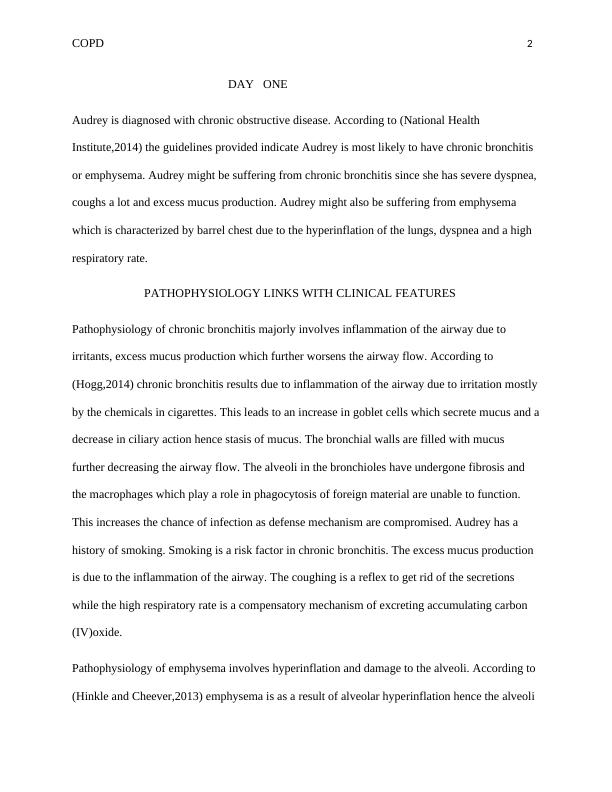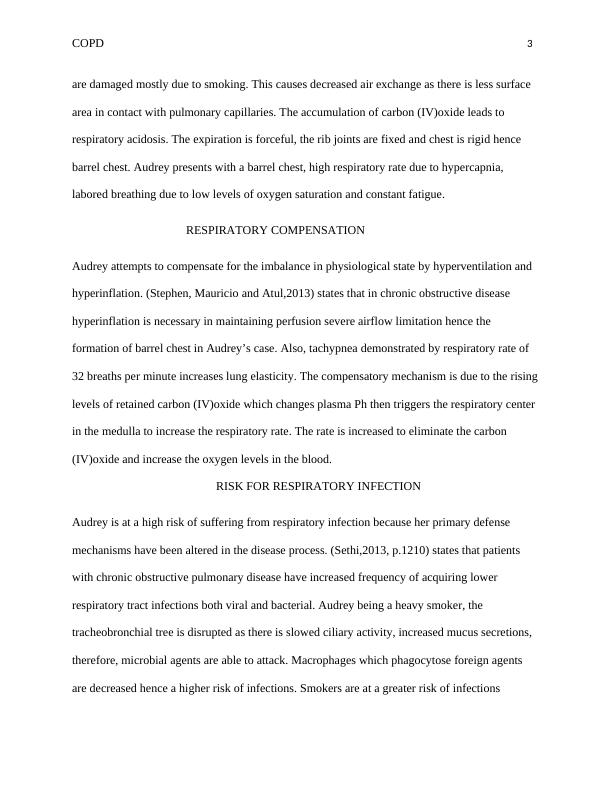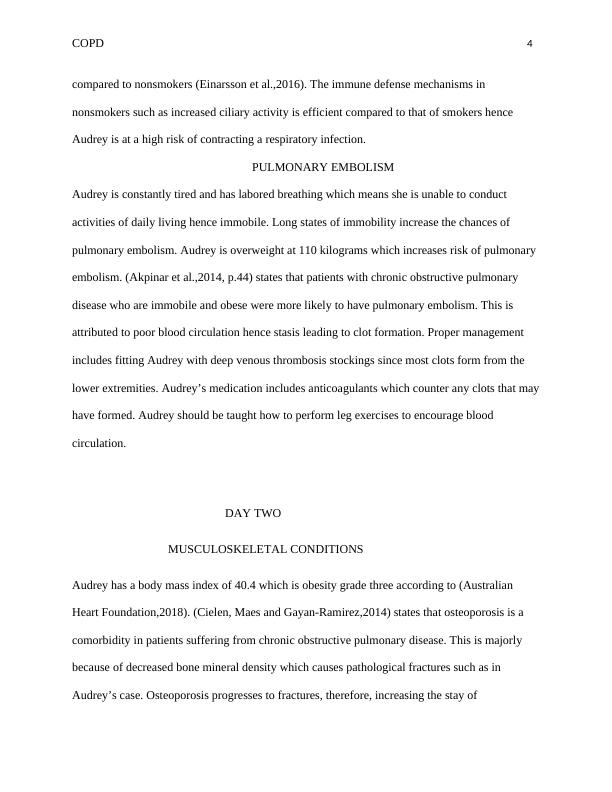Pathophysiology of Chronic Obstructive Pulmonary Disease
Analyzing Audrey Thomas' case to determine the COPD disease she most likely has, discussing her respiratory compensation, and evaluating her risk of respiratory infection.
14 Pages3347 Words366 Views
Added on 2023-06-04
About This Document
This article delves into the pathophysiology of chronic obstructive pulmonary disease (COPD), its clinical features, respiratory compensation, risk for respiratory infection, pulmonary embolism, and musculoskeletal conditions. It also discusses how hip fracture and replacement influence respiratory function and urinary volume. Additionally, it provides insights on Audrey's blood test and the complications she might develop.
Pathophysiology of Chronic Obstructive Pulmonary Disease
Analyzing Audrey Thomas' case to determine the COPD disease she most likely has, discussing her respiratory compensation, and evaluating her risk of respiratory infection.
Added on 2023-06-04
ShareRelated Documents
End of preview
Want to access all the pages? Upload your documents or become a member.
Chronic Obstructive Pulmonary Disease Essay
|12
|2476
|154
Pathophysiology of COPD, Acute Exacerbation, Pneumonia, and Interventions for COPD Management
|10
|2873
|82
Advanced Pathophysiology & Pharmacology: Assignment
|15
|3522
|31
Chronic Obstructive Pulmonary Disease: Anatomy, Physiology, Etiology, Symptoms, Investigations, Treatment and Management
|14
|3622
|302
Patients with chronic Health Condition
|8
|2309
|20
Intervention and Management of COPD
|15
|3611
|188




